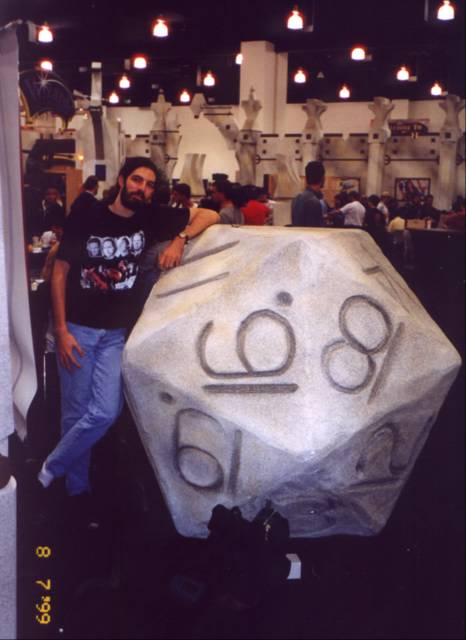Game Review: Attika

What's in the box?
The game consists of several discs made up of hex spaces, a deck of small cards and a rule book. Each player also gets a player sheet to keep track of their buildings and 30 discs representing those buildings. The components are pretty good quality, and the aesthetic of the game really works for me. The cards are smallish, similar in size to the original Ticket to Ride cards. There isn't much information to be displayed on them, so the size works fine in a functional sense, they're just a little awkward to shuffle for those of us with big hands.
How long does it take to play?
Our 2-player games of Attika take about 45 minutes. If someone is sneaky enough (or if their opponent is careless enough) they can win the came more quickly, and likewise if one of the players is AP prone, the game could take longer.
How does the game end?
There are two ways to win the game:
- be the first to place all 30 of your buildings on the board or
- be the first to have a chain of buildings reaching from one shrine to the other (the game starts with a shrine marker at each end of the board.)
How does it work?
At the beginning of the game, you divide your building tokens into 4 random, face down stacks and deal resource cards to each player. You then randomly choose 4 pieces to build the game board from, placing a shrine marker at each end. The building tokens each have a list of the resources needed to build them, these resources correspond to the resource cards in your hand and the resource symbols on the game board. The resources are water, forests, hills and mountains.
To play a building on the board, you pay its cost in resources by placing it adjacent to those resources on the board and/or paying resource cards from your hand. You'll spend your turns drawing more building discs from your supply and either placing them on the board or on your player mat for use in future turns. There are ways to play building without paying any resources if they're built in a certain order, and placing certain clusters of buildings together gets you an amphora token, which can be spend to take an additional action. As you begin exhausting your supply of building tokens, you start adding additional sections to the board. In this way, it is possible to open new routes to the shrines that were previously blocked off.
Of the two winning conditions, I initially believed the 'place all 30 of your buildings' to be the much more common way to win - our first 3 games all ended this way. It seemed pretty easy to block an opponent from connecting the 2 shrines, but subsequent plays have shown that it is quite possible to connect the shrines, you just have to be crafty about it and do a bit of planning ahead. If your opponent isn't vigilant about blocking you early on in your progress, you can surprise them with some solid planning. One could focus on trying to connect the shrines, or focus on trying to place their buildings as cheaply as possible in an attempt to play them all quickly. Most games so far have been a mix of the two.
Who will enjoy this game?
Those who are looking for a quick, intelligent tactical game will find what they are looking for here. There is definitely a strong "take that" aspect to the game as well. The game rewards adaptation as well. It's nice to try to form a plan, but it's important to keep an eye on your opponent as well.
Who won't enjoy this game?
Those who don't like having their plan interrupted may be frustrated with the game. I can see how some would consider the game to be a bit dry as well. The art style may put some people off too, I suppose. There is a little bit of luck of the draw between drawing your buildings and drawing cards from the deck, but I don't see this causing any big swings. Indeed, I'm not sure I can imagine a loss in Attika I didn't have a chance to prevent.
What I liked:
I love the reactionary play of the game. Trying to find a balance between accomplishing my goals and thwarting yours is the meat and potatoes of Attika. I've had a game or two where I thought I knew what my wife was up to, figured I could wait a turn or two before trying to stop her and got surprised. Likewise, I like trying to hold back amphoras and resource cards until I can make one big push in a single turn and ambush my opponent.
What I didn't like:
The back side of the player mats and board pieces look like big Q-Bert boards and make my eyes hurt.
The bottom line:
I love Attika. My wife likes it too. It feels like there is room to grow and learn as we play more games of it. You can learn new strategies from your opponent and incorporate them into your own play. The game feels like a race where you're always trying to trip each other. The game's aesthetic is simple and beautiful. I'm curious how this game will work with 3 or 4 players, but It's becoming a staple for my wife and I. It seems every time we sit down to game, she requests Vikings and I request Attika. Win/win.





0 Comments:
Post a Comment
Subscribe to Post Comments [Atom]
<< Home